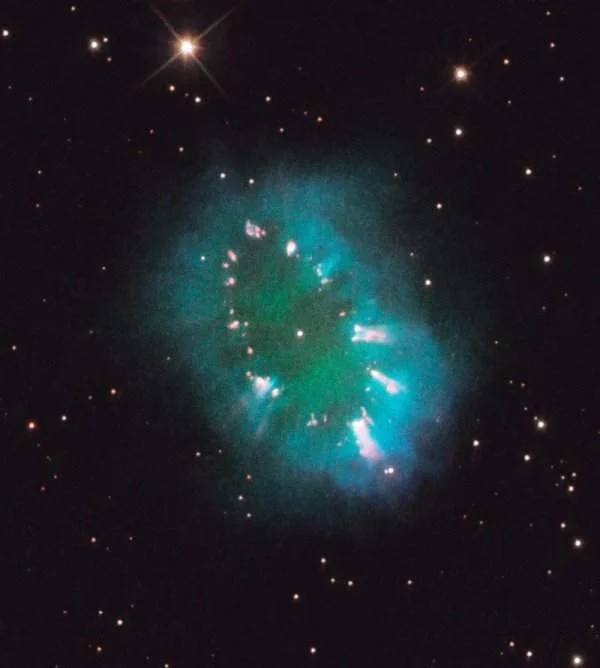NASA’s Hubble Space Telescope has captured a beautiful picture of a giant cosmic necklace. Aptly dubbed the Necklace Nebula (PN G054.2-03.4), the image shows a recently discovered planetary nebula – the glowing remains of an ordinary, Sun-like star.
The nebula comprises a bright ring that measures some 12 trillion miles across, dotted with dense, bright knots of gas which resemble diamonds in a necklace.

According to astronomers, the knots glow brightly due to absorption of ultraviolet light from the central stars.
A pair of stars orbiting very close together likely produced the nebula about 10,000 years ago, when one of the aging stars ballooned to the point where it enveloped its companion star.
This caused the larger star to spin so fast that much of its gaseous envelope expanded into space.
Due to centrifugal force, the majority of the gas escaped along the star’s equator, producing a dense ring. The embedded bright knots are the densest gas clumps in the ring.
The stars are frenetically whirling around each other, completing an orbit in a little more than a day. For comparison, Mercury, the closest planet to the Sun in our solar system, takes 88 days to complete its solar orbit.
The Necklace Nebula is located 15,000 light-years away in the constellation Sagitta (the Arrow). In this composite image, taken on July 2, 2011, Hubble’s Wide Field Camera 3 captured the glow of hydrogen (blue), oxygen (green), and nitrogen (red).






